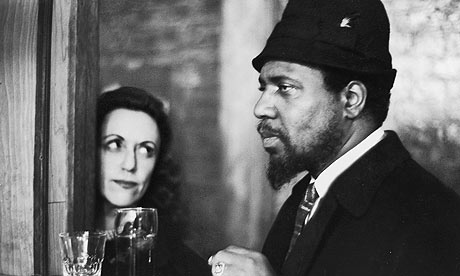Who: Jazz legend Miles Davis (1926-1991, trumpet) and his nonet (i.e., 9-piece ensemble: piano, bass, drums, trumpet, tuba, trombone, French horn, and alto and baritone saxophone).
What: A collection of recordings Davis made in 1949-1950, this album is remarkable for a number of reasons. First, it features a nine-piece band (nonet)—a rare thing in jazz—which places it at a critical position between the big bands of 1940s swing and the stripped down ensembles of bebop jazz. Second, this is the foundational record of "cool jazz": while the bebop bands played fast and hot, these songs are smooth and cool, even incorporating elements of classical music into jazz. This record is the first of several that established Miles Davis as one of the most important American musicians of all time.
Where: New York, NY through and through.
 |
| The jazz clubs on 52nd St where Davis played, New York, 1948. |
Why: This record is jazz music as elegant and cool as it gets. It is a rare jazz album that manages to be both accessible, even to those who aren't jazz fans (especially given that the average track length is three minutes) and cutting-edge (it is one of the first to incorporate classical elements into jazz).
| Davis and the nonet in the recording sessions for Birth of the Cool, New York, 1949-50. |
Additional Dose: This 1946 recording of "A Night in Tunisia" features Davis playing trumpet in the band of the great Charlie Parker, one of the founders of bebop jazz. Davis played in Parker's band before becoming the leader of his own, immediately prior to the recordings that became Birth of the Cool. (Parker died in 1955, never making an LP album in his lifetime, and thus, not featured in our initial list of records).





